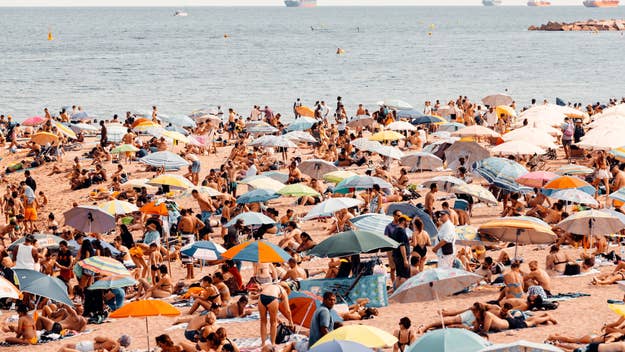
The Earth broke not one, but two unsettling records this week.
According to data from the U.S. National Centers for Environmental Prediction, the average global air temperature reached 62.62 degrees Fahrenheit on Monday, surpassing the previous record of 62.42 degrees Fahrenheit in August 2016. However, the record was short-lived, as the planet’s average temperature rose to 62.92 degrees Fahrenheit on the following day (July 4) and remained at the unofficial record high on Wednesday.
It’s unclear if July 4 and 5 were truly the warmest days Earth has ever endured, as the NCEP data only goes back to 1979.
“This is our ‘best guess’ of what the surface temperature at each point on Earth was yesterday,” Paulo Ceppi, a climate scientist at London’s Grantham Institute, told the Washington Post. He explained the NCEP gathers its data through a modeling system that uses satellites, ocean buoys, and weather stations. In order to analyze long-term temperature variations before 1979, researchers must analyze tree rings and ice cores.
“These data tell us that it hasn’t been this warm since at least 125,000 years ago, which was the previous interglacial,” Ceppi added.
Experts attribute the record-high temperatures to a number of factors, including the return of El Niño and global warming caused by greenhouse gas emissions. Scientists and environmental activists have called on lawmakers to combat climate change by backing clean energy initiatives and passing laws that drastically reduce greenhouse gases. Researchers have warned that increasing temperatures will likely result in deadly disasters, such as rising sea levels and heat waves that can result in severe flooding, famine, and blazes.
“The solution to the problem is actually rather simple,” said Myles Allen, a professor of geosystem science at Oxford University: “Capturing carbon dioxide, either where it is generated or recapturing it from the atmosphere and disposing of it back underground. If we did this, we would definitely use much less fossil fuels.”
Canadian wildfires wreaked havoc on the United States last month, as smoke drifted to the Northeastern region. According to Gothamist, New York City’s air quality took a major hit this week due to the smoke from the Macy’s Fourth of July fireworks display.
Per the outlet:
Along the East River, a team of NYU graduate students recorded up to 3,300 micrograms of particulate matter per cubic meter volume of air in the aftermath of the [Macy’s] fireworks display. Anything greater than 500 micrograms per cubic meter is considered extremely dangerous in the short term, according to the U.S. Department of Environmental Protection website.
Ahead of the federal holiday, a number of U.S. cities decided to ditch the traditional fireworks display out of concern for air pollution and wildfires.
"As temperatures rise and fire danger increases, we must be conscientious of both our air quality and the potential for wildfires,” Salt Lake City Mayor Erin Mendenhall said in a press release last week announcing the city’s new drone show. “The summer holiday shows are a mainstay for Salt Lakers and we’re excited about adapting to new technology which will provide a safe alternative for our residents and visitors.”

